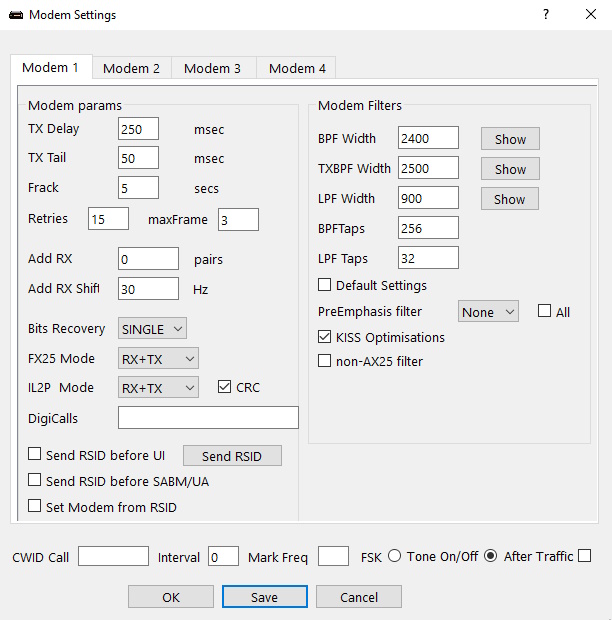Table of Contents
GB7BSK Basingstoke, Hampshire
See live packet connectivity map
Sysop: 2E0HKD
Locator: IO91kg
RF Ports
| Port | Frequency | Mode | NinoTNC Mode | Links To | Status |
|---|---|---|---|---|---|
| 1 | 144.9375 MHz FM | 3600 baud QPSK IL2P+CRC | 0101 (v39+) | GB7WIN, GB7RDG (marginal to M6THZ, even more marginal to GB7WOD, these are locked out of L4 but you can try L2 connect if you want) | Operational |
| 2 | 70.3125 MHz FM | 4800 baud GFSK IL2P+CRC | 0100 | maybe GB7WIN in the future | Temp Disabled (waiting for new power connector) |
| 3 | 432.625 MHz FM | 9600 baud GFSK IL2P+CRC | 0010 | GB7RDG | Operational |
The 3600 baud mode is available from NinoTNC v39 or above, setting 0101 (this firmware replaces the old 0101 mode of DPSK 2400 IL2P)
Good link to GB7RDG on 70cm port 3, and to GB7WIN on 2m port 1.
BBS/Mail, and Chat available. SSID for direct connection to BBS GB7BSK-1, and for chat GB7BSK-4.
Packet mail region: #48.GBR.EURO
BBS Hierarchical Address (HA): GB7BSK.#48.GBR.EURO
Sysop address: 2E0HKD@GB7BSK.#48.GBR.EURO
Forwarding enabled for bulletins to:
- OARC - For the Online Amateur Radio Club (OARC) community
- GBR - Great Britain wide
- WW - World wide
Rejects bulls @WW over 5000 bytes from external BBSes to avoid saturating onward HF links within the network, please keep bulls a sensible length as you never know what links they may need to traverse!
WhatsPac
WhatsPac is a great new application for packet that has chat channels and private messages. Visit http://whatspac.m0ahn.co.uk:88/ for more information. Note that the project is in alpha so a few things are still being ironed out.
It is possible to route to the main WhatsPac server node MB7NPW from GB7BSK, although the most stable route includes one AXIP link, the rest is all RF. Have a look a the packet map to get an idea of routes and feel free to drop 2E0HKD a message by packet mail or on the OARC discord if you need help with routing.
QtSoundModem Settings
If using QtSoundModem as a modem, you should select “QPSK AX.25 3600bd” and a centre frequency of 1650 hz.
And in the modem settings (Settings → Setup Modems) enable FX25 and IL2P for RX+TX, and tick the CRC box.
AX.25 2.2 with SREJ
It is also possible to connect using AX.25 2.2, which may have some advantages described below.
To do this from a BPQ node, use the “nc” (new connect) command, rather than the more common “c” (or “connect”) command, and force L2 (no NET/ROM) by putting an exclamation mark in front of the callsign. E.g.:
nc 2 !gb7bsk
(The 2 in this example specifies the port, use the “ports” command on a node to work out which one is on the appropriate band).
One advantage of this type of connection is the ability for SREJ, or selective reject, to be used. Normally, several packet may be sent out in order, and if one of them is not received correctly the entire batch is rejected with a REJ message. The whole set of packets then has to be retransmitted. SREJ allows only specific packets to be rejected, so only those individual packet need to be retransmitted.
As of BPQ version 6.0.24.69, netrom L4 connections will use AX.25 2.2 for the underlying L2 connection, with all the SREJ benefits without you having to do anything else.



